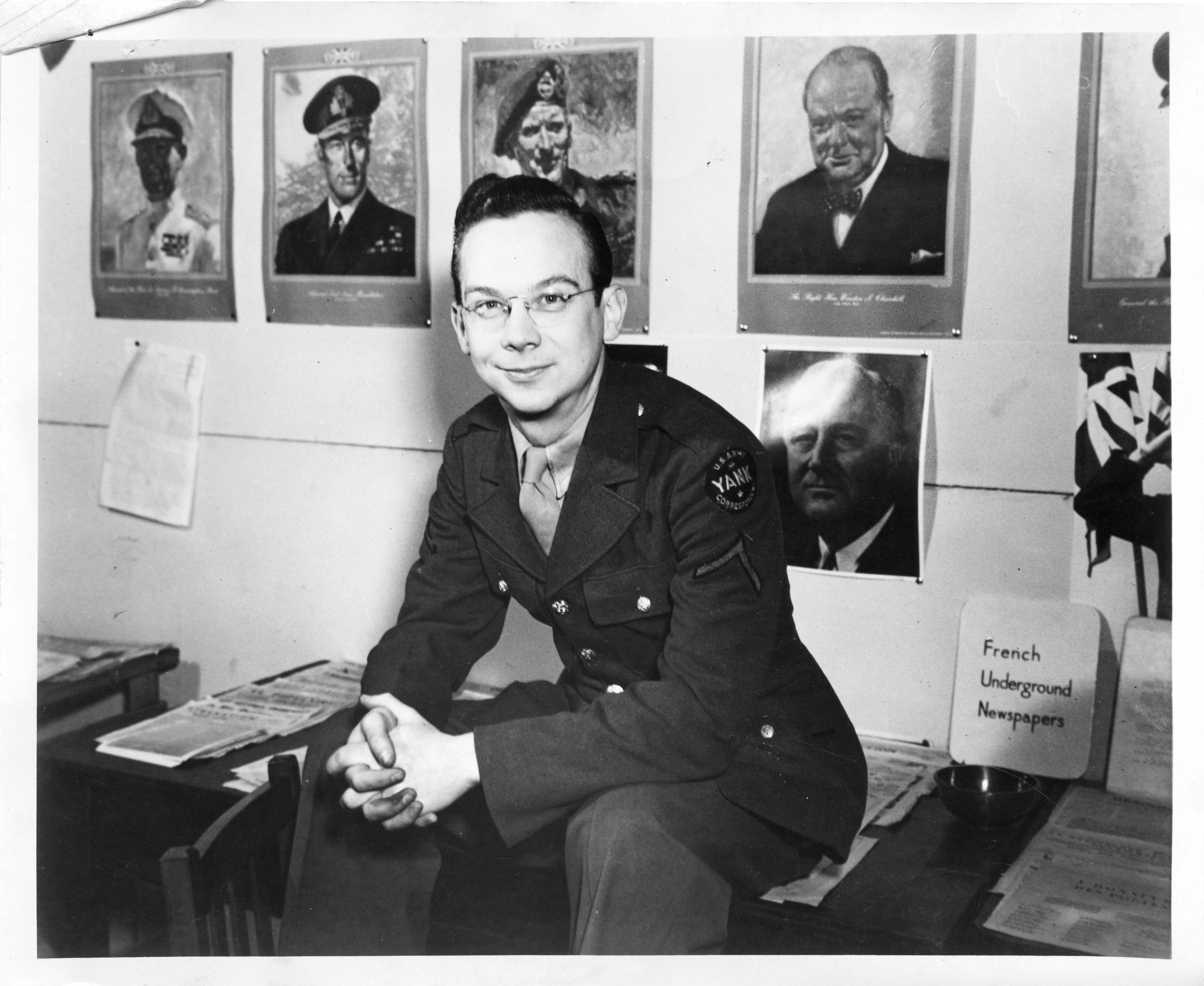Results for "Joint Committee on Archives of Science and Technology (U.S.)"

Science Service, Up Close: Technology and Political Conventions
- Date: July 19, 2016
- Creator: Marcel Chotkowski LaFollette
- Description: In a Presidential election year, political news coverage can sometimes seem almost too instantaneous and continuous. Thanks to smartphones with cameras and microphones, journalists and citizens can relay images and sound from almost anywhere inside campaign activities. There was a time, however, when live broadcasting from political conventions and rallies was novel.Starting

Science Service, Up Close: At the Front - War Correspondents and Cartoonists
- Date: August 27, 2015
- Creator: Marcel Chotkowski LaFollette
- Description: War correspondents and cartoonists amongst the Science Service collections at the Smithsonian Institution Archives.

Wonderful Women Wednesday: Lillian Kozloski
- Date: August 24, 2022
- Creator: Emily Niekrasz
- Description: Each week, the Archives features a woman who has been a groundbreaker at the Smithsonian, past or present, in a series titled Wonderful Women Wednesday.

Link Love: 9/20/2019
- Date: September 20, 2019
- Creator: Deborah Shapiro
- Description: Link Love: a weekly post with links to interesting videos and stories about archival issues, technology and culture, and Washington D.C. and American history.
- Blog Post
Science Service, Up Close: White House Science Advisors, from Roosevelt to Nixon
- Date: May 11, 2017
- Creator: Marcel Chotkowski LaFollette
- Description: May 11 is the anniversary of establishment of the White House Office of Science and Technology Policy (OSTP). That 1976 legislation further ratified the influence of scientists on national policy, positioning them to provide ready advice to the President.

Science Service, Up Close: Radio Extends the Audience, Inauguration Day, 1925
- Date: January 19, 2017
- Creator: Marcel Chotkowski LaFollette
- Description: President Calvin Coolidge's second inauguration in 1925 reaches an audience of millions, thanks to a new technological innovation--the radio.
- Blog Post
Publicity, Politics, and Physics
- Date: March 10, 2010
- Creator: Marcel Chotkowski LaFollette
- Description: Long ago and far away, before gray hairs and creaky knees, before history became my passion, I was an undergraduate physics major. Physics seemed fascinating and beautiful, if difficult. Later, after career paths led into history and science policy, I learned that physics, however elegant, did not reside in a cultural vacuum. Its people and discoveries coexisted with

Science Service, Up Close: Patent Parades, Silk Purses, and Snake Bite Remedies
- Date: March 30, 2017
- Creator: Marcel Chotkowski LaFollette
- Description: Everyone loves a parade – especially one followed by a banquet. When scientists and politicians met in Washington, D.C., on November 23, 1936, to celebrate the centennial of the U.S. patent system, they listened first to a conventional program of speeches. Then, in the afternoon, Science Service director Watson Davis arranged something different: a “Research Parade” featuring
- Blog Post
Wonderful Women Wednesday: Dr. Carol O’Donnell
- Date: November 4, 2020
- Creator: Emily Niekrasz
- Description: Each week, the Archives features a woman who has been a groundbreaker at the Smithsonian, past or present, in a series titled Wonderful Women Wednesday.

Science Service, Up Close: The Periodic Chart
- Date: January 3, 2017
- Creator: Marcel Chotkowski LaFollette
- Description: Henry David Hubbard (1870-1943), a physicist at the U.S. National Bureau of Standards, designed the first edition of the "Periodic Chart of the Atoms" in 1924. The chart is still in use today, continually updated to reflect new elements.
Dr. Donald Fleming Squires (1927-2017)
- Date: February 13, 2018
- Description: [edan-image:id=siris_sic_14492,size=500,center]Dr. Squires was a pioneer in the application of computer technology in science museums and the founding father of data processing at the Smithsonian’s National Museum of Natural History (NMNH). He died on his 90th birthday, December 19, 2017 in Tasmania, Australia, after a short illness. Squires received an B.A. from Cornell
- Blog Post
The Archives’ Hidden Women
- Date: March 15, 2018
- Creator: Deborah Shapiro
- Description: [edan-image:id=siris_sic_9246,size=500,center]THE BIGGER PICTURE's “Wonderful Women Wednesday” series profiles the female curators, directors, and research scientists who have risen to prominence in their careers at the Smithsonian.These stories of broken glass ceilings are fascinating, but they barely scratch the surface of the Smithsonian’s female workforce through the
